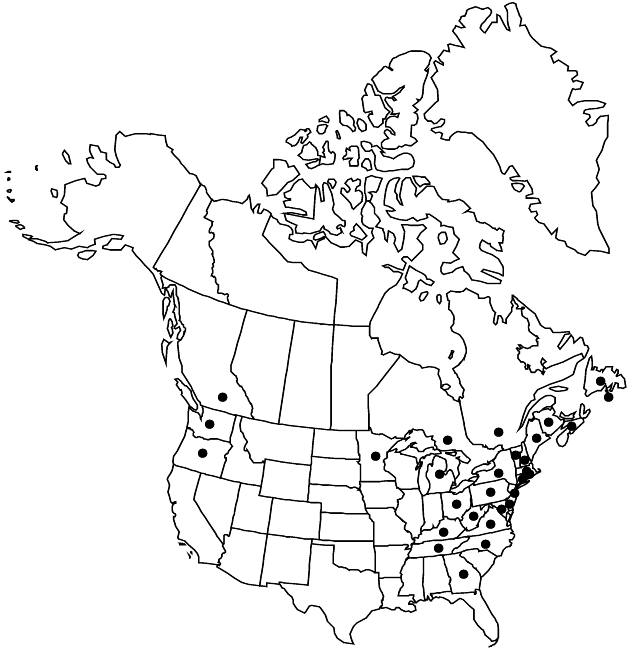Hieracium pilosella
Sp. Pl. 2: 800. 1753.
Plants 10–25(–40+) cm. Stems proximally piloso-hirsute (hairs 1–3+ mm) and stellate-pubescent, distally piloso-hirsute (hairs 1–2 mm), stellate-pubescent, and stipitate-glandular. Leaves: basal (2–)5–10+, cauline 0(–3); blades elliptic to ± oblanceolate, 10–45(–75+) × 5–12(–18+) mm, lengths 2–4(–6+) times widths, bases cuneate, margins entire, apices acute, faces piloso-hirsute (hairs 2–7+ mm) and stellate-pubescent. Heads usually borne singly, rarely 2(–3). Peduncles piloso-hirsute and stellate-pubescent. Calyculi: bractlets 8–15+. Involucres hemispheric to obconic, 7.5–9 mm. Phyllaries 20–34+, apices acuminate, abaxial faces stellate-pubescent and stipitate-glandular, sometimes piloso-hirsute as well. Florets 60–120+; corollas yellow (often each with abaxial red stripe), 8–13+ mm. Cypselae columnar, 1.5–2 mm; pappi of 30+, white bristles in 1 series, 4–5 mm.
Phenology: Flowering May–Aug.
Habitat: Disturbed sites (sandy or gravelly soils, fields, lawns, roadsides)
Elevation: 10–100+ m
Distribution

Introduced; St. Pierre and Miquelon, B.C., N.B., Nfld. and Labr. (Nfld.), N.S., Ont., Que., Conn., Del., Ga., Ky., Maine, Md., Mass., Mich., Minn., N.H., N.J., N.Y., N.C., Ohio, Oreg., Pa., R.I., Tenn., Vt., Va., Wash., W.Va., Europe.
Discussion
Selected References
None.